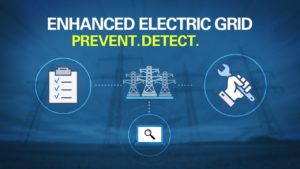The State Corporation Commission Thursday rejected in large part the highly-touted Dominion Energy Virginia proposal to rebuild its transmission grid, approving only the elements improving cyber and physical security. Those were the least expensive and least controversial pieces of its application.
The 2018 legislation that stated major grid investments were in the public interest also re-stated the Commission’s charge to review them for prudence and reasonableness.
It did (here’s the order) and found this:
“With regard to those elements that have not been approved, we agree with Consumer Counsel (of the Attorney General) that as a general matter ‘the plan as filed is significantly lacking in detail with respect to the proposed investments.’ Also, with regard to the Plan in general, we agree with Environmental Respondents Witness (Caroline) Golin who stated, ‘As a complete package, the [grid transformation] Plan is not cost-effective and will result in an economic loss for all customers,’ While we find the Plan elements related to Cyber and Physical Security are well-conceived, well-supported and cost-effective, we find that the remaining Plan elements, which will cost customers hundreds of millions of dollars, are not.”
The Commission told the utility it was free to address the SCC’s concerns and try again with a new application. The cyber and physical security upgrades, coupled with improved communication along the transmission and distribution lines, are slated to cost about $910 million over ten years. The rejected portions of the plan, with financing costs and profit margins, would had added another $5 billion in customer costs, according to the SCC’s figures.
The decision aligned closely with the criticism of the plan that surfaced during the discovery and hearing process. The SCC staff complained about the lack of detail in the application, and those complaints were repeated at a hearing in November.
The rejected proposals include:
- Advanced Metering Infrastructure (AMI) and related elements (total costs: $1.3 billion; Phase I costs: $696.8 million)
- Intelligent Grid Devices, Operations and Automated Control Systems, and Emerging Technology (total costs: $776.0 million; Phase I costs: $157.5 million) and
- Grid Hardening (total costs: $3.0 billion; Phase I costs: $486.1 million)
“While supportive of the goals of AMI technology, the Sierra Club, Environmental Respondents and Consumer Counsel all oppose Dominion’s AMI proposal as not adequately developed and therefore neither reasonable nor prudent as to costs and benefits. “For example, Environmental Respondents Witness Golin testified, ‘[AMI and related technologies] are beneficial and cost-effective only to the extent the Company utilizes them to maximize the potential gains of rate optionality, energy efficiency, demand response, and DERs [distributed energy resources (“DERs”)].’ Witness Golin concludes, however, that “[t]he Company does not have plans to fully optimize the Smart Metering proposed …” and “[w]ithout a well-reasoned plan, this expensive equipment could be under-utilized and provide little to no benefit to customers and the utility.’ We agree.”
It is likely some of the members of the General Assembly who loved the 2018 bill will also agree that what Dominion proposed is not what they were promised. Others will wait to hear from the company.
Tomorrow is the deadline for bill filing during the 2019 General Assembly. Several bills are pending which might carry amendments relevant to this matter, an effort to put an even heavier thumb on the scale in favor of Dominion’s expensive proposals. In other recent statutes the Assembly has been explicit in ordering SCC approval of its desires, imposing its decision on what is reasonable and prudent.
Stay tuned.


Leave a Reply
You must be logged in to post a comment.